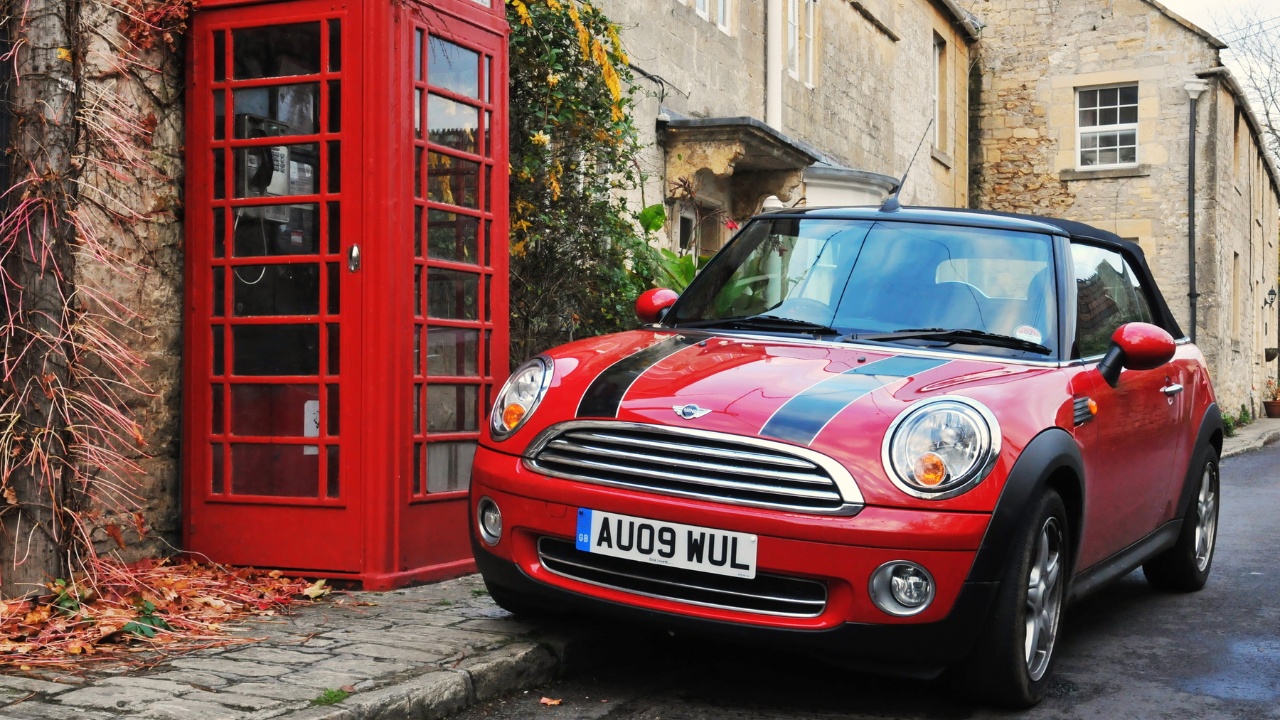13 European Cars to Stay Away From Buying

European cars are often stylish and luxurious, especially the more expensive models. However, they also commonly suffer from sometimes serious issues.
Using reliable sources, such as RepairPal, Consumer Reports, CarEdge, and various owners’ forums, we’ve compiled a list of European cars that either have poor reliability ratings or cost a small fortune to repair when something goes wrong (or both).
Let’s take a closer look at 13 European cars you should probably stay away from.
E60 BMW M5

BMW created an absolute beast with the V10-powered E60 M5. Unfortunately, what makes it so awesome is also what ruins it. As much as we want to love the V10, it has a nasty habit of destroying its own rod bearings.
While it’s perfectly normal for performance cars to be more maintenance intensive than economy models, BMW’s 4th-gen M5 requires constant care and maintenance. Even then, chances are it’ll eventually blow up. It’s not just the engine that’s a problem here, either. The car’s SMG gearbox was jerky and harsh at slow speeds and in stop-and-go traffic.
E63 BMW M6

The E63 BMW M6 arrived in 2005 and came close to being one of the best M cars ever. Unfortunately, BMW gave it the same V10 engine as the M5, which means it suffers from all the same reliability issues.
Both the M5 and M6 are total money pits, suffering from issues with the rod bearings, valve cover gasket oil leaks, and throttle actuators. Each of these can cost thousands to fix.
Mini Cooper S

Strictly speaking, this is another BMW product, as the Bavarians own the British carmaker. There’s no denying that the Mini Cooper S is one of the most fun small hatchbacks to drive — it has decent power and great handling, and there’s a massive selection of aftermarket parts.
Unfortunately, all three generations of the new Mini have their fair share of issues, but none more so than the second generations, known as the R56. The number of complaints on the owners’ forums is staggering, and the worst problem is related to the timing chain — commonly called the “death rattle.”
E90 BMW 335i

We swear this is the last BMW product on this list, but we had to mention the E9X 335i! Tuners and driving enthusiasts loved it when it first arrived. After all, this was a car that offered BMW’s legendary driving dynamics, and it was powered by a twin-turbocharged 3.0-liter six-cylinder that was very receptive to performance parts.
It soon turned out that the engine wasn’t particularly reliable, especially when modified and driven hard. Today, you can find these cars for sale for very little money, but it’s almost guaranteed to cause headaches. Common problems are failing turbos, an overheating engine, and water pump failure, among others.
Bentley Continental W12

When it was new, the Bentley Continental was one of the most stylish cars on the market, which is probably why it cost over $150,000. Since they sell for a fraction of that price today, it’s easy to think it’s a bargain, but once you factor in maintenance, nothing could be further from the truth.
Even if you buy one in immaculate condition, you’re pretty much guaranteed to run into costly repairs as a Bentley Continental owner. After a couple of years, you’ve probably spent almost as much on maintenance as you paid for the car itself.
2010 Jaguar XK

We love Jaguar’s stylish and aggressive XK model, and since it’s so much cheaper today than when it first hit the market, it can be very tempting to buy one of these sporty and luxurious beasts. However, we really advise that you resist that temptation and save your money instead.
The Jag XK has a naturally aspirated 5.0-liter V8 engine that comes with a few headache-inducing problems. In addition, there are electrical issues, and some owners have complained about brake failure and a sticking throttle.
Volvo XC40

It’s amazing how people seem to trust that Volvo will only sell them quality products. Years ago, the Swedish carmaker had a stellar reputation for reliability, but that’s no longer the case. In fact, Consumer Reports only gave them a reliability rating of 45 out of 100.
Along with some of the larger SUVs, the 2023 XC40 is among the manufacturer’s worst models. While such new cars come with a warranty, dealing with a car that constantly annoys you isn’t worth the hassle. Also, its estimated maintenance costs during the first ten years of ownership are $13,513, which isn’t cheap.
Alfa Romeo Giulia Quadrifoglio

Over the years, Alfa Romeo has created some of the most fun, beautiful, and desirable cars ever. The best part is that, unlike most other Italian machines, they’re attainable for regular people, not just multi-millionaires. The Giulia is one of those amazing Alfas…at least when everything works.
Italian carmakers have struggled with electrical systems ever since the dawn of the Italian car industry. Perhaps they mistake the cables for spaghetti? Electrical issues are known to rear their ugly head after just a few thousand miles; from there, it’ll only worsen. Buying an Alfa Romeo Giulia is only recommended if you’re a sucker for pain and suffering.
Fiat 500

Continuing with another Italian carmaker, Fiat is also known for its fun and affordable cars. The tiny Fiat 500 is a retro-styled supermini that goes head-to-head against the famous Mini Cooper, and it’s just as much fun to drive…when it works as it should.
For such a tiny car, the Fiat 500 has many problems, some of which can be pretty expensive. When buying a small, budget car, people usually don’t expect to pay a premium to keep it running, but that’s part and parcel of Fiat 500 ownership. Electric issues are to be expected — it’s Italian, after all — but gearbox and suspension problems are also common.
W203 Mercedes-Benz C-Class C230

Mercedes–Benz struck gold with the 190E, or W201. It’s successor, the W202 C-Class, never really managed to fill its predecessor’s shoes and had too many issues. Enter the W203. Surely, Mercedes-Benz had sorted it out by now, right? No, not really. In fact, most M-B enthusiasts seem to agree that this one is even worse than the troublesome W202.
The W203 C-class suffers from severe rust issues, and while that may be its biggest problem, it’s not the only one. The front suspension bushes are known to fail, there are balancing shaft issues, and problems with the radiators. Buying an old W203 C-class means you’ll spend almost as much as the car is worth on annual maintenance.
Aston Martin DB7

While it’s possible to buy an Aston Martin DB7 for less than the price of a Prius, that doesn’t make it a good idea. There’s no denying that the DB7 is a great-looking car, and since it’s often considered the car that saved Aston Martin, it’s fair to say it’s an important piece of automotive history.
However, this piece of history is best left in a museum. DB7 ownership will make you pull your hair out, as it’s a high-end sports car built on a shoestring budget. What you’ll get for your hard-earned cash are components found in the Ford parts bin and endless problems in the form of steering issues, electrical gremlins, vibrations, water leaks, cracked exhaust headers, and warped brake discs.
Maserati Ghibli

Most brand-new cars see a certain amount of depreciation once your name is on the title and you drive it out of the dealership. Maserati takes depreciation to a whole new level, though. A study by U.S. News found that the Ghibli drops nearly 70% in value in just 60 months — and that’s not even the worst–depreciating Maserati.
Buying a slightly used Maserati and saving 70% may seem like a bargain, but it isn’t. These cars depreciate because they cost a small fortune to maintain. The build quality is shoddy, there are tons of issues to be aware of, and it’s packed with cheap components — such as the switchgear from a Chrysler minivan.
Jaguar S-Type

Back in the 1990s, Jaguar decided to built a slightly retro-styled car before everyone else did it, so the new S-Type was made to resemble the original S-Type from the 1960s. The design didn’t really work, and the car looks questionable, but that’s not why you should avoid it.
The Jaguar S-Type is known to have some issues. Power steering problems are common in early models, and electrical issues are to be expected across the board. Considering that it’s built on a Ford platform and has many parts in common with other Ford brands, you may pay a premium if you buy “genuine Jaguar parts.”





